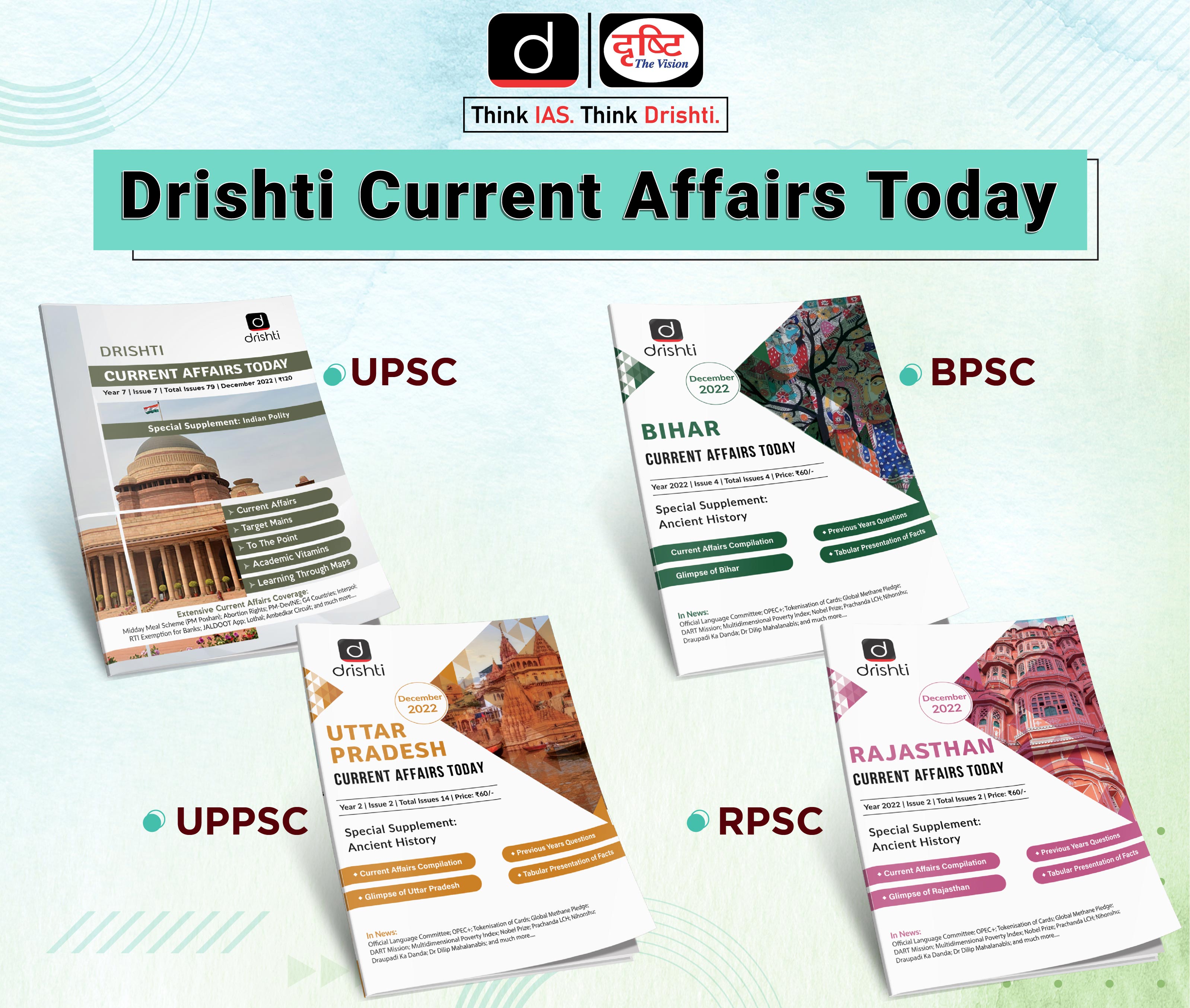Chhattisgarh Switch to Hindi
Chhattisgarh's Initiatives to Combat Malaria
Why in News?
Recently, Chhattisgarh Chief Minister has directed the health department to take proactive measures for preventing seasonal diseases during the monsoon season.
- As a result, the number of malaria cases across the state, including Bastar, has significantly reduced.
Key Points
- Preventing diseases like malaria in the dense forests and inaccessible areas of Bastar Division has always been a major challenge.
- Under the malaria eradication campaign,The malaria positivity rate decreased from 4.60% to 0.51% during nine phases of the malaria eradication campaign from 2020 to 2023.
- The tenth phase ended on 5th July, 2024, and 16.97 lakh insecticide-treated mosquito nets were distributed in 22 districts as part of the campaign.
- The health department's malaria case report for the first half of 2024 revealed the following number of cases: 1,660 in Bastar, 4,441 in Bijapur, 1,640 in Dantewada, 259 in Kanker, 701 in Kondagaon, 1,509 in Narayanpur, and 1,144 in Sukma.
- Consequently, the health department has enhanced case monitoring and strengthened the treatment facilities in all the districts.
Malaria
- Malaria is a life-threatening mosquito borne blood disease caused by plasmodium parasites.
- There are 5 Plasmodium parasite species that cause malaria in humans and 2 of these species – P. falciparum and P. vivax – pose the greatest threat.
- Malaria is predominantly found in the tropical and subtropical areas of Africa, South America as well as Asia.
- Malaria is spread by the bite of an infected female Anopheles mosquito.
- The mosquito becomes infected after biting an infected person. The malaria parasites then enter the bloodstream of the next person the mosquito bites. The parasites travel to the liver, mature, and then infect red blood cells.
- Symptoms of malaria include fever and flu-like illness, including shaking chills, headache, muscle aches, and tiredness. Notably, malaria is both preventable and curable.


Madhya Pradesh Switch to Hindi
Regional Industrial Conclaves in Madhya Pradesh
Why in News?
According to the sources, The Madhya Pradesh government is going to organise Regional Industrial Conclaves (RIC) in different cities of the state in the coming months.
Key Points
- According to the Madhya Pradesh Industrial Development Corporation (MPIDC), following Jabalpur, RIC events will be organized in Gwalior, Rewa, and Sagar.
- Additionally, a textile conclave is planned for Indore, and a conclave focused on electronics and renewable energy equipment manufacturing units will be held in Bhopal.
- As per officials, after organising the Global Investors Summit (GIS) in Indore for several consecutive years, the state government has now decided to organise it in the capital city, Bhopal.


Madhya Pradesh Switch to Hindi
Madhya Pradesh Pilgrimage Scheme
Why in News?
Madhya Pradesh Chief Minister has directed for the expansion of the government's pilgrimage scheme for senior citizens and inclusion of the state's religious places in it.
Key Points
- The Mukhyamantri Tirth Darshan Yojana, under which people visit various pilgrimage sites in the country, was started in 2012.
- The geographical structure of Madhya Pradesh prevents many residents from visiting various pilgrimage sites, leaving them unaware of the unique features within their own state.
- The scheme should be expanded to enable senior citizens to visit not only renowned pilgrimage sites across the country but also notable religious locations within Madhya Pradesh.
- The CM asked the officials to:
- Prepare a plan for facilitating meritorious students to visit important tourist places of historical importance.
- Enable visits of folk artists from tribal-dominated areas to the tourist places, where they can showcase their art.
Mukhyamantri Teerth Darshan Yojana
- It was launched by the Department of Religious Trusts and Endowments, Government of Madhya Pradesh in June 2012.
- Under the scheme, the state government provides one-time assistance to senior citizens above 60 years of age (2 years relaxation in case of women) of the state to visit a prescribed pilgrimage outside the state.
- In this scheme, free travel is made to senior citizens of the state.
- The pilgrims travel by special train, breakfast, food, and pure drinking water, arrangements for stay at pilgrimage places,etc.


Haryana Switch to Hindi
Haryana Adds New OBC Quota
Why in News?
Recently, the Haryana Government hiked the creamy layer ceiling for Other Backward Classes (OBCs) from an annual income of ₹6 lakh to ₹8 lakh. Also introduced a 5% quota for the OBC-B category in Panchayati Raj Institutions and municipalities.
Key Points
- OBCs in Haryana are estimated at around 40% of the State’s population and comprise 78 castes.
- The 5% reservation for the OBC-B category would be in addition to the 8% quota for the OBC-A category already in force.
Other Backward Class (OBC)
- The term OBC includes all classes of citizens who are socially and educationally backwards.
- Supreme Court concluded that in order to identify OBC’s, the principle of exclusion of creamy layer should be applied.
- A creamy layer can be defined as those classes of people within the OBC category who are no longer backward and are socially and economically at par with other forward classes of the country.
Constitutional Provisions
- Under Article 15(4) of the Constitution, the State has the power to make special provisions for the advancement of any socially and educationally backward class i.e., the OBC.
- The term “special provision for advancement” includes several aspects like reservation of seats in educational institutions, financial assistance, scholarships, free housing etc.
- Under Article 16(4), the state is empowered to enact laws for the reservation of appointments or posts in favour of OBCs.


Bihar Switch to Hindi
MSP for Makhana
Why in News?
- Recently, The Bihar government has urged the Centre to declare the Minimum Support Price (MSP) for makhana, an aquatic crop cultivated across 10 districts in the state.
Key Points
- The state has raised concerns about the shortage of staff at the Darbhanga-based Indian Council of Agricultural Research - National Research Centre (ICAR-NRC) for Makhana.
- Bihar produces about 85% of the country's makhana, with approximately 10 lakh people directly or indirectly involved in its cultivation and production process.
- According to the Agriculture Ministry, The ICAR-NRC for Makhana in Darbhanga was approved by the Department of Agricultural Research & Education, Government of India, as a new scheme during the IX Five Year Plan period (1997–2002) for Conservation, Research & Development of the makhana crop.
- The NRC for Makhana started operating in February 2002, but in 2005 it was merged with the ICAR-Research Complex for Eastern Region (RCER) in Patna, resulting in the revocation of its "national" status.
- In May 2023, the Central government upgraded the Research Centre for Makhana, Darbhanga to "National Research Centre for Makhana, Darbhanga" and expanded its mandate to include other aquatic crops such as fish.
- The NRC for Makhana was transferred under the ICAR’s Agricultural Engineering Division and attached to the Ludhiana-based ICAR-Central Institute of Post Harvest Engineering & Technology.
Mithila Makhana
- Mithila Makhana or Makhan (botanical name: Euryale ferox Salisb.) is a special variety of aquatic fox nut cultivated in Mithila region of Bihar and Nepal.
- Makhana is the one of the three prestigious cultural identities of Mithila.
- Pan, Makhan and Machh (fish) are the three prestigious cultural identities of Mithila.
- It is also very famous in the Kojagara festival of Maithil Brahmins celebrated for newly married couples.
- Makhana contains protein and fiber, along with micronutrients like calcium, magnesium, iron, and phosphorus.
- It received its Geographical Indication (GI) Tag in 2022.


Uttar Pradesh Switch to Hindi
Saushrutam 2024
Why in News?
Recently, The Department of Shalya Tantra at All-India Institute of Ayurveda (AIIA) successfully organised the Second National Seminar SAUSHRUTAM Shalya Sangoshti on the occasion of Sushruta Jayanti-2024.
Key Points
- Sushruta Jayanti is celebrated annually on 15th July to honor Sushruta, the legendary father of surgery.
- He was an ancient Indian surgeon from Kashi (around 7th century BC) and is the author of ‘Sushruta Samhita’, a comprehensive textbook on medicine and surgery.
- The Sushruta Samhita is organized into five major sections:
- Sutrasthana: Primary principles dealing with basic principles of medical sciences and pharmacology;
- Nidana: It deals with pathological concepts;
- Sarirasthana: On human anatomy;
- Chikitsasthanam: On medical and surgical management;
- Kalpasthanam: On toxicology.










%20MPPCS%202025%20Desktop%20E.jpg)
%20MPPCS%202025%20Mobile%20E%20(1).jpg)










.png)
.png)











 PCS Parikshan
PCS Parikshan


